Increased expression of Solute carrier family 12 member 5 via gene amplification contributes to tumour progression and metastasis and associates with poor survival in colorectal cancer
- PMID: 25947013
- PMCID: PMC4819609
- DOI: 10.1136/gutjnl-2014-308257
Increased expression of Solute carrier family 12 member 5 via gene amplification contributes to tumour progression and metastasis and associates with poor survival in colorectal cancer
Abstract
Objective: Using whole genome sequencing, we identified gene amplification of solute carrier family 12 member 5 (SLC12A5) located at 20q13.12 in colorectal cancer (CRC). We analysed its amplification, overexpression, biological effects and prognostic significance in CRC.
Design: SLC12A5 amplification status was evaluated by fluorescence in situ hybridisation (FISH). The effects of SLC12A5 re-expression or knockdown were determined in proliferation, apoptosis, invasion and metastasis assays. SLC12A5 target genes and related pathways were identified by reporter activity and cDNA microarray analyses. Clinical impact of SLC12A5 overexpression was assessed in 195 patients with CRC.
Results: Amplification of SLC12A5 was verified in 78 out of 191 (40.8%) patients with primary CRC by FISH, which was positively correlated with its protein overexpression (p<0.001). Biofunctional investigation of SLC12A5 revealed that SLC12A5 significantly increased cell proliferation, G1-S cell cycle transition, invasion/migration abilities, but suppressed apoptosis in vitro and promoted xenograft tumour growth as well as lung metastasis in vivo. The antiapoptosis effect by SLC12A5 was mediated through inhibiting apoptosis-inducing factor and endonuclease G-dependent apoptotic signalling pathway; and the pro-metastasis role was by regulating key elements of the matrix architecture, including matrix metallopeptidase and fibronectin. After a median follow-up of 50.16 months, multivariate analysis revealed that patients with SLC12A5 protein overexpression had a significant decrease in overall survival. Kaplan-Meier survival curves showed that SLC12A5 overexpression was significantly associated with shortened survival in patients with CRC.
Conclusions: SLC12A5 plays a pivotal oncogenic role in colorectal carcinogenesis; its overexpression is an independent prognostic factor of patients with CRC.
Keywords: COLORECTAL CANCER; GENE EXPRESSION; MOLECULAR ONCOLOGY; TUMOUR MARKERS.
Published by the BMJ Publishing Group Limited. For permission to use (where not already granted under a licence) please go to http://www.bmj.com/company/products-services/rights-and-licensing/
Figures
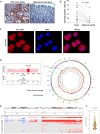

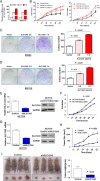
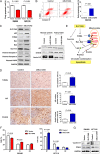
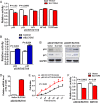
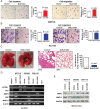

Similar articles
-
Solute carrier family 12 member 5 promotes tumor invasion/metastasis of bladder urothelial carcinoma by enhancing NF-κB/MMP-7 signaling pathway.Cell Death Dis. 2017 Mar 23;8(3):e2691. doi: 10.1038/cddis.2017.118. Cell Death Dis. 2017. PMID: 28333147 Free PMC article.
-
Overexpression of SLC12A5 is associated with tumor progression and poor survival in ovarian carcinoma.Int J Gynecol Cancer. 2019 Oct;29(8):1280-1284. doi: 10.1136/ijgc-2019-000229. Int J Gynecol Cancer. 2019. PMID: 31570543
-
Increased expression of formin-like 3 contributes to metastasis and poor prognosis in colorectal carcinoma.Exp Mol Pathol. 2015 Apr;98(2):260-7. doi: 10.1016/j.yexmp.2015.03.008. Epub 2015 Mar 7. Exp Mol Pathol. 2015. PMID: 25758200
-
A Systematic Review on HOX Genes as Potential Biomarkers in Colorectal Cancer: An Emerging Role of HOXB9.Int J Mol Sci. 2021 Dec 14;22(24):13429. doi: 10.3390/ijms222413429. Int J Mol Sci. 2021. PMID: 34948228 Free PMC article.
-
Insight of nitric oxide signaling: A potential biomarker with multifaceted complex mechanism in colorectal carcinogenesis.Biochem Biophys Res Commun. 2018 Jan 8;495(2):1766-1768. doi: 10.1016/j.bbrc.2017.12.051. Epub 2017 Dec 9. Biochem Biophys Res Commun. 2018. PMID: 29233694 Review.
Cited by
-
A potassium-chloride co-transporter promotes tumor progression and castration resistance of prostate cancer through m6A reader YTHDC1.Cell Death Dis. 2023 Jan 6;14(1):7. doi: 10.1038/s41419-022-05544-8. Cell Death Dis. 2023. PMID: 36609444 Free PMC article.
-
Solute carrier transporters: potential targets for digestive system neoplasms.Cancer Manag Res. 2018 Jan 24;10:153-166. doi: 10.2147/CMAR.S152951. eCollection 2018. Cancer Manag Res. 2018. PMID: 29416375 Free PMC article. Review.
-
Neuroendocrine pathways and breast cancer progression: a pooled analysis of somatic mutations and gene expression from two large breast cancer cohorts.BMC Cancer. 2022 Jun 21;22(1):680. doi: 10.1186/s12885-022-09779-8. BMC Cancer. 2022. PMID: 35729536 Free PMC article.
-
Prognostic significance of AP-2α/γ targets as cancer therapeutics.Sci Rep. 2022 Mar 31;12(1):5497. doi: 10.1038/s41598-022-09494-1. Sci Rep. 2022. PMID: 35361846 Free PMC article.
-
Membrane Transporters and Channels in Melanoma.Rev Physiol Biochem Pharmacol. 2021;181:269-374. doi: 10.1007/112_2020_17. Rev Physiol Biochem Pharmacol. 2021. PMID: 32737752 Review.
References
Publication types
MeSH terms
Substances
LinkOut - more resources
Full Text Sources
Other Literature Sources
Medical
